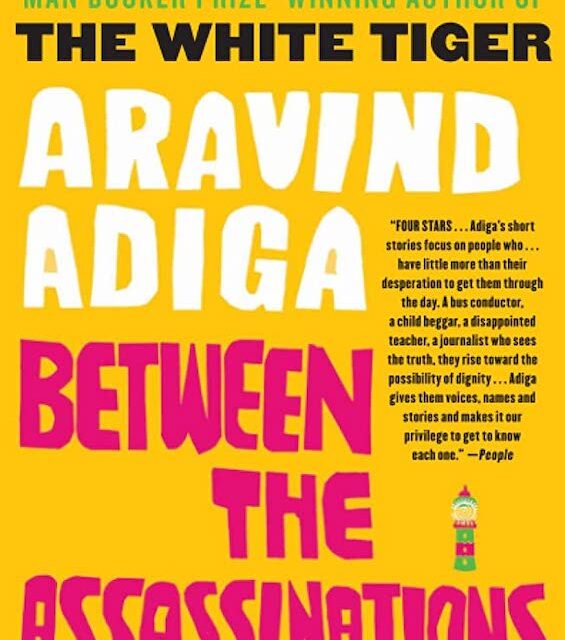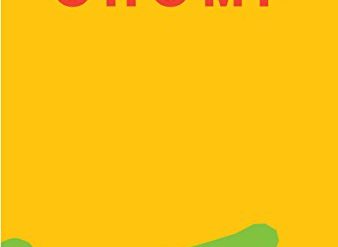
Aravind Adiga is one of India’s most refreshing contributions to the world of books in recent years. His first novel, a wildly original story of near-mythic proportions, The White Tiger, won the UK’s prestigious Man Booker Prize. His second artfully highlights India’s diversity.
Estimated reading time: 6 minutes
Between the Assassinations is a latticework of fourteen interrelated stories about the people of Kittur, a small town on India’s southwestern coast, between the fabled cities of Goa and Calicut. The organizing principle of this book is the tourist guide. Each story begins with a walk through one of Kittur’s distinctive neighborhoods, giving the reader a view of the town’s humanity in all its extraordinary diversity. The stories in this collection are set in the tumultuous time in Indian history between the assassination of Prime Minister Indira Gandhi in 1984 and that of her son, Rajiv, seven years later.
A casual visitor to India inevitably remarks on the abject poverty to be found among so many of that country’s people. But much that remains invisible to the tourist comes to life in this remarkable collection of stories. The hopes, fears, doubts, and convictions of India’s poor. And the survival strategies they forge in the midst of challenges the rest of us cannot conceive. As a portrait of caste and class and intercommunal (Hindu-Muslim) relations in modern India, this book truly excels. It’s a lavish introduction to India’s diversity.
Between the Assassinations by Aravind Adiga (2008) 368 pages ★★★★☆

India’s diversity by the numbers
India’s 1.4 billion inhabitants are the most diverse collection of people on Planet Earth. Indian society is enriched by differences of religion, language, caste, ethnicity, geography, and class. And that diversity is both a great asset and a hindrance in the path of India’s route to restore the greatness its civilization enjoyed before the age of colonialism. Because so many of these people simply don’t wish to live in the same country as one another. And they often act as though they don’t.
Diverse by religion
According to the Indian educational site ClearIAS, “The Indian population is made up of Hindus (82.41%), Muslims (11.6%), Christians (2.32%), Sikhs (1.99%), Buddhists (0.77%), and Jains (0.41%), in addition to the tribal societies, many of which continue to practice animism and magic. [And] Hindus are divided into a number of sects, including Vaishnavas, Shaivites, Shaktas, and Smartas. Similarly, there are various Muslim sects, including Shi’ites, Sunnis, Ahmadis, etc.”
Diverse by language
Authorities differ, some interpreting dialects as distinct languages, but it is clear that at least thirty Indian languages are each spoken by more than a million people and 122 by more than 10,000. With a total of 780 languages, the country is home to more than any other country except Papua New Guinea. Hindi is the official language, with English being the second official language. But Hindi and its many dialects are spoken only by an estimated 400 million people, English by some 200 million. In fact, India is ranked as the world’s second-largest English-speaking country after the United States. However, 300 million speak Bengali, and other regional languages individually account for hundreds of millions more people who may understand neither Hindi nor English. Many Indians are multilingual. But far from all.
Diverse in so many other ways
- Outsiders unfamiliar with India’s caste system are sometimes shocked by the seemingly endless number of different subdivisions of the country’s population. There are five major groups, the Brahmins, Kshatriyas, Vaishyas, Shudras, and the outcastes, or Dalits. But each of these groups encompasses innumerable levels, sub-castes, and other variations.
- The country’s ethnicity can also be bewildering, with enormous variations in appearance such as skin color and manner of dress.
- Geographically, too, the country is enormously diverse, encompassing some of the highest mountains in the world, the deepest river valleys, deserts, and coastal communities at the mercy of the rising seas.
- And of course there is a fathomless gap between the country’s fast-growing cadre of billionaires and desperately poor villagers and slum-dwellers. According to a report by Oxfam, India’s top 1% owned more than 40.5% of its total wealth in 2021. The following year the number of billionaires in the country increased to 166 from from 102 in 2020. Meanwhile, the rerport added, the poor in India “are unable to afford even basic necessities to survive.”
About the author

The bio on Aravind Adiga‘s author website reads in full as follows: “Aravind Adiga was born in 1974 in Madras (now called Chennai), and grew up in Mangalore in the south of India. He was educated at Columbia University in New York and Magdalen College, Oxford. His articles have appeared in publications such as the New Yorker, the Sunday Times, the Financial Times, and the Times of India. His first novel, The White Tiger, won the Man Booker Prize for fiction in 2008. Subsequent novels are: Last Man in Tower (2011), Selection Day (2016) and Amnesty (2020).
Wikipedia is more informative about the author. For example, the site notes that his paternal grandfather was the former chairman of a bank with more than 900 branches in twenty-two states. And his maternal great-grandfather was a popular medical practitioner and Indian National Congress politician from Madras. The site also reveals that Adiga “began his career as a financial journalist, interning at the Financial Times. With pieces published in the Financial Times and Money, he covered the stock market and investment. As a Times correspondent he interviewed US President Donald Trump.”
For related reading
Some time ago, I read Aravind Adiga’s superb, Booker Award-winning novel, The White Tiger, which won the UK’s prestigious Man Booker Prize. More recently, I’ve reviewed three other novels by the same author:
- Last Man in Tower (A compelling portrait of Indian society today)
- Selection Day (An Indian novelist celebrates cricket)
- Amnesty (An immigrant and a murder in Australia)
This is one of the Good books about India, past and present that I’ve reviewed on this site.
For another superb novel set in the state of Kerala see The Covenant of Water by Abraham Verghese (A deeply moving tale of life, love, and loss in 20th-century India).
If you enjoy reading history in fictional form, check out 20 most enlightening historical novels. And if you’re looking for exciting historical novels, check out Top 10 historical mysteries and thrillers.
You might also be interested in Top 10 great popular novels.
And you can always find my most popular reviews, and the most recent ones, on the Home Page.



























Hi, i just thought i’d post and let you know your blogs layout is also truly messed up on unique K-Melon browser. Anyhow preserve up that good work.
That’s Too nice, when it comes in india hope it can make a Rocking place for youngster.. hope which come true.